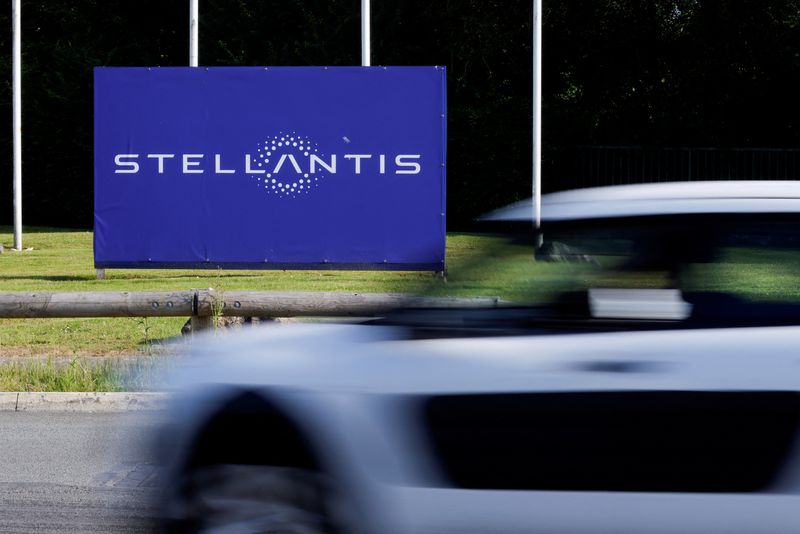By Nora Eckert
DETROIT (Reuters) -Stellantis said on Tuesday it will deploy a new vehicle system that will support assembly of gasoline, hybrid and electric models, but in a sign of how turbulent the electric-vehicle transition is, the automaker also delayed production of Ram electric pickup trucks.
The Franco-Italian company revealed details about its STLA Frame platform, which will support full-size trucks and SUVs. Platforms are thought of as a skateboard on which many different types of vehicles can be built, and include important electrical and mechanical components of the car.
“We are very focused on the execution of our plan, despite all the difficult challenges that the industry is facing,” said CEO Carlos Tavares on a call with reporters.
Tavares said the automaker is delaying production of its electric Ram pickups until the first half of 2025 from this year, citing the need to ensure quality.
“We are just facing a very significant amount of workload,” he said.
Automakers in Detroit and elsewhere rushed into building EV-manufacturing capacity over the last two years, only for demand to grow more slowly than anticipated.
The decision of whether to focus on platforms that support EVs versus those that include flexibility for hybrids or gasoline-powered vehicles has split automakers. Ford Motor (NYSE:F) has leaned into selling hybrid vehicles, while General Motors (NYSE:GM) has focused on battery-powered models after investing more up front into building its own EV platform. GM will start offering plug-in hybrids in 2027, it said.
Stellantis (NYSE:STLA) is mainly offering plug-in hybrids in the U.S. for now, but plans to ramp up EV sales in the coming years, chasing a goal of 100% battery electric car sales in Europe and 50% electric passenger car and light-duty truck sales in the U.S. by 2030.
The global industry faces even greater uncertainty around EV demand if U.S. President-elect Donald Trump carries out plans to unravel various incentives around EV production and sales.
Trump’s transition team is planning to kill the $7,500 consumer tax credit for electric-vehicle purchases as part of broader tax-reform legislation, two sources with direct knowledge of the matter told Reuters last week.
Some of Stellantis’ plug-in hybrids, including the Jeep Grand Cherokee, qualify for half of that credit.
The carmaker is confronting slipping sales in North America, which has historically brought in sizable profits thanks to sales of its popular Jeep and Ram vehicles. Tavares changed his management team in an effort to address its high vehicle inventory and slumping stock price, and he is planning to retire at the end of his contract in 2026.
Stellantis’ shares are down about 40% this year.
The company announced in 2021 it would design the Frame platform in addition to large, medium and smaller foundations to accommodate different vehicles in its lineup. Ram and Jeep vehicles are the first to use the Frame version, Stellantis said on Tuesday.
Battery electric vehicles on Frame will have up to 500 miles (805 km) of range, and it will offer a 14,000-pound (6,350-kg) towing capacity, the company said. It will also support hydrogen and extended-range electric vehicles.



